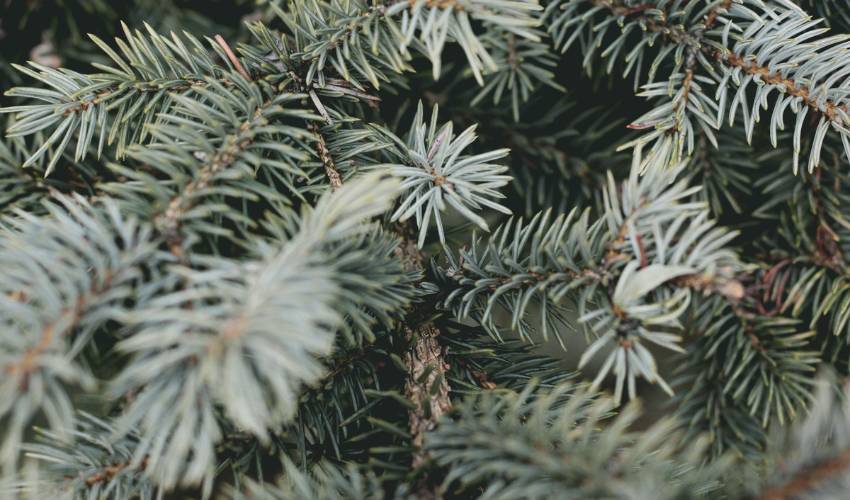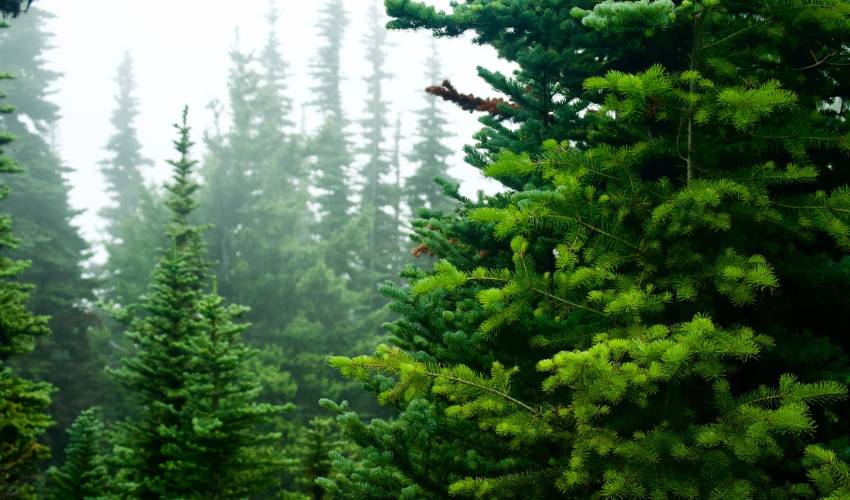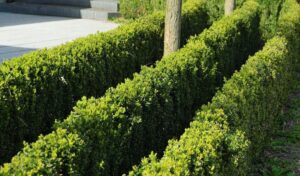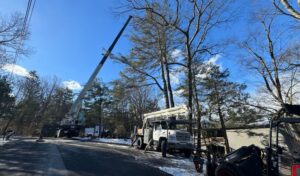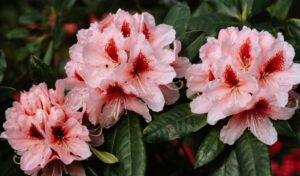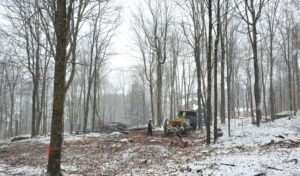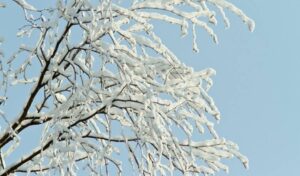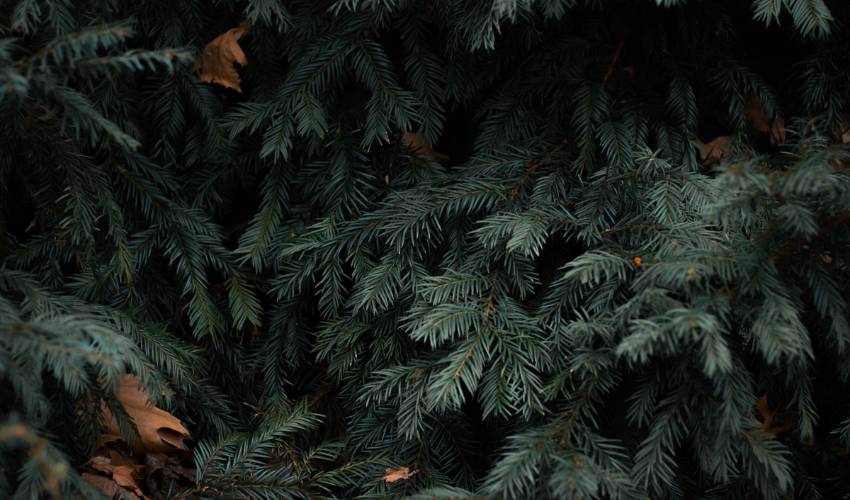
Do you ever wonder how some trees manage to stay green all year round? Evergreen trees are the answer!
In this article, we will explore the different types of evergreen trees, their unique characteristics, and their importance in the environment.
Discover how these trees are able to survive the winter through year-round photosynthesis.
Get ready to delve into the fascinating world of evergreen trees and gain a deeper understanding of their resilience and beauty.
What Are Evergreen Trees? – Key Takeaways
- Evergreen trees, such as pine, spruce, and cedar, retain their leaves or needles year-round.
- Their waxy coating on leaves or needles helps prevent water loss and protects from freezing temperatures.
- Evergreen trees can grow in various environments due to their adaptability and have a conical shape that helps shed snow and ice, reducing damage to branches.
- They play a crucial role in the environment by producing oxygen year-round, absorbing carbon dioxide, providing habitat and shelter for wildlife, and contributing to the overall health of ecosystems.
Types of Evergreen Trees
If you’re looking for types of evergreen trees, you can find a variety of options such as pine, spruce, and cedar. These trees are known for their ability to retain their foliage year-round, providing a lush and green landscape even during the coldest months.
One popular type of evergreen tree is the pine tree. There are many different species of pine, each with its own unique characteristics. Some common types of pine trees include the Eastern White Pine, the Ponderosa Pine, and the Lodgepole Pine. These trees are often prized for their tall and straight trunks, making them a popular choice for timber.
Another type of evergreen tree is the spruce tree. Spruce trees are known for their pointed and spiky needles. They come in a variety of colors, including blue, green, and even golden varieties. Spruce trees are often used in landscaping due to their symmetrical shape and ability to withstand harsh weather conditions.
Lastly, cedar trees are another popular option. Cedar trees are known for their aromatic scent and beautiful reddish-brown bark. They are often used for their timber, as well as for their natural insect-repellent properties.
Overall, when it comes to types of evergreen trees, the options are vast. Whether you prefer the classic look of a pine tree, the unique shape of a spruce tree, or the aromatic beauty of a cedar tree, there is sure to be an evergreen tree that suits your preferences.
Unique Characteristics of Evergreen Trees
You’ll notice that these trees maintain their leaves or needles year-round. This is one of the unique characteristics of evergreen trees. Unlike deciduous trees that shed their leaves in the fall, evergreen trees keep their foliage throughout the year, providing a constant green presence in the landscape.
One of the main reasons evergreen trees are able to retain their leaves or needles is due to their adaptation to colder climates. The waxy coating on their leaves or needles helps to prevent excessive water loss and protects them from freezing temperatures. This allows evergreen trees to continue photosynthesis and produce food even during the winter months when other plants are dormant.
Another characteristic of evergreen trees is their ability to grow in a variety of environments. From snowy mountaintops to coastal regions, evergreen trees can thrive in different climates and soil conditions. Their adaptability makes them a popular choice for landscaping and providing year-round beauty and shade.
In addition, evergreen trees often have a conical shape, which helps them shed snow and ice, preventing damage to their branches. This shape also allows for efficient water runoff, reducing the risk of disease and rot.
Overall, the unique characteristics of evergreen trees make them a valuable addition to any landscape. Their ability to maintain their foliage year-round, adaptability to different environments, and conical shape all contribute to their beauty and resilience.
Interested in adding evergreens to your property? Check out our planting evergreens blog article!
Importance of Evergreen Trees in the Environment
Take a moment to appreciate the vital role that these resilient plants play in maintaining the health and balance of our environment. Evergreen trees are not just beautiful additions to our landscapes; they also provide numerous benefits that are crucial for the well-being of our planet.
- Oxygen Production: Evergreen trees are known for their ability to photosynthesize throughout the year. This means they continue to produce oxygen even during the winter months when deciduous trees have shed their leaves. The constant oxygen production helps to keep our air clean and breathable.
- Carbon Dioxide Absorption: Evergreens are excellent at absorbing carbon dioxide from the atmosphere. As they take in this greenhouse gas, they help to mitigate climate change by reducing its concentration in the air.
- Wildlife Habitat: The dense foliage of evergreen trees provides shelter and nesting sites for a wide variety of wildlife. Birds, squirrels, and other animals rely on these trees for protection and as a source of food. By supporting biodiversity, evergreens contribute to the overall health of ecosystems.
Evergreen trees are not only visually appealing, but they also play a crucial role in maintaining a healthy environment. From oxygen production to carbon dioxide absorption and providing habitat for wildlife, these resilient plants are essential for the balance and well-being of our planet.
So, let’s continue to appreciate and protect these remarkable trees.
Year-Round Photosynthesis: How Evergreen Trees Survive Winter
Did you know that even during the winter months, evergreen trees are able to continue photosynthesizing and providing crucial energy for their survival? Unlike deciduous trees that shed their leaves in the fall, evergreen trees have adapted to withstand the harsh conditions of winter by retaining their green foliage year-round.
One of the key reasons evergreen trees can continue photosynthesizing throughout the winter is because of their needle-like leaves. These leaves have a smaller surface area compared to broad leaves, which helps to reduce water loss and the risk of freezing. Additionally, the waxy coating on the needles acts as a protective barrier against dehydration and cold temperatures.
Another important adaptation of evergreen trees is their ability to adjust their photosynthetic rates according to environmental conditions. During winter, when sunlight is limited and temperatures are low, evergreen trees slow down their photosynthesis. They conserve energy by reducing the production of chlorophyll, the pigment responsible for capturing sunlight. This allows them to maintain a steady energy supply without exhausting their resources.
Furthermore, evergreen trees are well-equipped to withstand freezing temperatures. Their cells are rich in sugars and other organic compounds that act as natural antifreeze agents, preventing ice crystals from forming and damaging the tissues. This mechanism ensures that the trees can continue transporting water and nutrients, even in subfreezing conditions.
In conclusion, evergreen trees have remarkable adaptations that enable them to survive and thrive during the winter months. Their ability to continue photosynthesizing and provide crucial energy for their survival is a testament to their resilience and importance in the environment.
What Are Evergreen Trees? – Frequently Asked Questions
How do evergreen trees differ from deciduous trees?
Evergreen trees differ from deciduous trees in that they retain their leaves year-round. Unlike deciduous trees, which shed their leaves in the fall, evergreens provide constant greenery and are better adapted to colder climates.
Are all evergreen trees the same size?
No, not all evergreen trees are the same size. Evergreen trees can vary in size, with some being tall and majestic while others are smaller and more compact.
Can evergreen trees be found in all regions of the world?
Yes, evergreen trees can be found in all regions of the world. They thrive in various climates and can be seen in forests, mountains, and even in urban areas.
Do evergreen trees shed their needles?
Yes, evergreen trees shed their needles, but not all at once. They continuously replace old leaves with new ones, ensuring they always have green foliage.
Are there any specific threats or diseases that commonly affect evergreen trees?
Yes, there are specific threats and diseases that commonly affect evergreen trees. Some examples include needlecast, root rot, and insect infestations. It’s important to monitor and treat these issues to keep your evergreen trees healthy.
Want to know more about the evergreens of New York State? Consider visiting the New York State Museum and experience their evergreen forest exhibit for yourself!
Need help with your trees in the Hudson Valley?
Call Hill Treekeepers today at 914-584-7992. We’ve got the skill and experience to handle all of your tree service needs whether you’ve got evergreens, deciduous, fruit trees, or any other kind of tree or shrub. See why we’re the top choice for tree care in the Hudson Valley New York area!
Share this online!
Get the highest quality of tree services for residential and commercial properties in the Hudson Valley area. We look forward to working with you!
TOPICS
Recent Articles
Don't Miss the Next Update!
Join the thousands of smart Hudson Valley residents who get the monthly newsletter from Hill Treekeepers. It's full of helpful information you won't want to miss!

